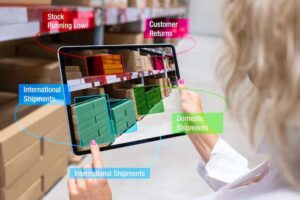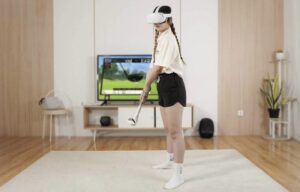Mixed Reality (MR) emerges as a revolutionary catalyst transforming industries and reshaping our technological interactions. This comprehensive exploration delves into captivating case studies and practical applications spotlighting the transformative power of mixed reality.
From manufacturing to healthcare, entertainment, and education, these instances vividly depict MR’s influence, revolutionizing processes, amplifying engagement, and propelling breakthrough advancements. Embark on a journey to unearth the diverse applications and triumphs of mixed reality in our ever-evolving landscape.
Discover the future of VR and AR for business projects
Transitioning into Mixed Reality
Mixed reality transcends the boundaries of Augmented Reality (AR) by intricately intertwining virtual content with our physical reality. Through specialized headsets and real-time mapping, MR cultivates a profound sense of immersion, seamlessly blending virtual objects into reality, erasing the boundaries between the tangible and the virtual.
Deciphering the Essence of AR versus MR
Augmented Reality embellishes our reality by superimposing digital elements onto the physical world. In contrast, Mixed Reality effortlessly intertwines and engages with both realms, enriching the experience by integrating virtual entities into our environment, creating a deeper, more immersive encounter.
Augmented Products: Revolutionizing consumer connections and experiences.
The Magnetic Appeal of Mixed Reality’s Dominion
The allure of MR lies in its seamless integration of virtual content with the physical world, crafting heightened realism and interactivity. Within MR, virtual objects dynamically interact with physical barriers, respond naturally to user actions, and enable intricate manipulations, resulting in captivating and interactive experiences.
Navigating Challenges in Embracing Mixed Reality
Implementing MR faces hurdles such as hardware limitations, intricate content creation, system integration complexities, and privacy concerns. Overcoming these obstacles demands technological advancements, comprehensive user education, and addressing privacy and security issues.
Picturing a Mixed Reality-Driven Tomorrow
The horizon of MR spans diverse sectors – education, healthcare, entertainment, and design. It is poised to revolutionize industries, fostering unmatched interactions and inspiring innovative possibilities. Immersive educational simulations and assisting intricate medical procedures stand as exemplars of MR’s transformative potential.
Here are examples featuring companies across various industries:
Fashion Retail – Mixed Reality Try-Ons
Fashion brands like Gucci, Zara, and ASOS are integrating mixed reality for virtual try-on experiences. Through apps and online platforms, customers can visualize how clothing items look and fit virtually before making a purchase.
Military Training – Mixed Reality Simulations
Companies such as Lockheed Martin and Raytheon utilize mixed reality for military training simulations. They develop immersive scenarios for soldiers to practice combat maneuvers, medical procedures, and equipment handling in simulated environments.
Sports Training – STRIVR
Sports teams like the NFL’s Dallas Cowboys and the NHL’s Toronto Maple Leafs utilize STRIVR, a mixed reality platform, for immersive training. Athletes can engage in realistic simulations to enhance performance and decision-making.
Museum Exhibits – Mixed Reality Experiences
Museums such as the Smithsonian Institution and the Louvre leverage mixed reality for interactive exhibits. Visitors engage with historical artifacts and artworks through augmented information and immersive storytelling.
Real Estate – Virtual Property Tours
Real estate agencies like Sotheby’s International Realty and RE/MAX offer mixed reality-driven virtual property tours. Prospective buyers can explore homes remotely, visualizing floor plans and amenities.
Environmental Studies – Virtual Eco-Systems
Educational institutions like universities and research centers use mixed reality to simulate ecosystems and environmental scenarios. Students engage in immersive experiences to understand ecological impacts.
Construction Planning – Spatial Computing Tools
Construction firms like Skanska and Turner Construction implement mixed reality for spatial planning. Architects and engineers visualize construction projects on-site using MR tools for better project management.
Music Production – Virtual Studios
Companies in music production like Ableton and Avid integrate mixed reality for virtual studio experiences. Artists collaborate remotely in virtual environments, enhancing creativity and music production workflows.
Conclusion
The journey through mixed reality realms unveils a landscape brimming with innovation and transformative potential. Embracing its evolution not only dissolves the boundaries between physical and virtual but elevates engagement, streamlines processes, and redefines human-computer interaction.
Amid triumphs, MR grapples with challenges. Overcoming these hurdles demands collaborative efforts, technological strides, and ethical frameworks, promising a future where MR enhances our lives, educates our minds, and revolutionizes tech interactions.


Average Rating